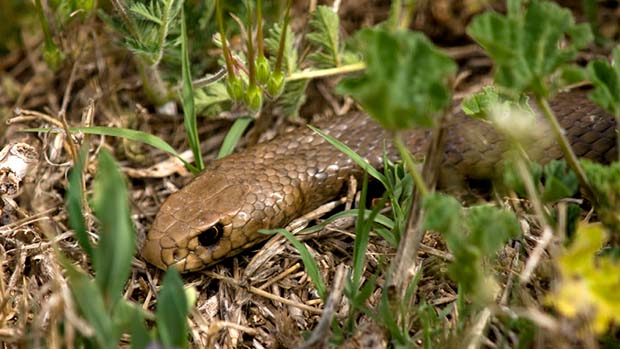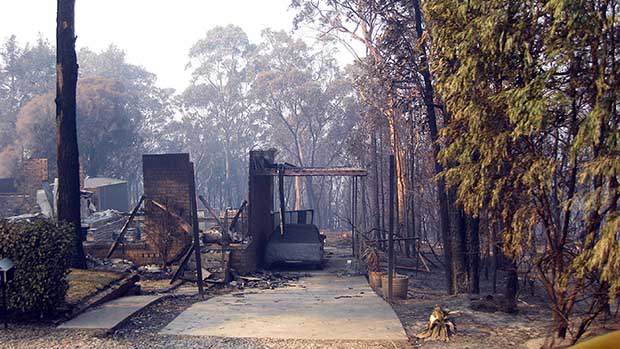Science and society: inseparable bedfellows
Expert reviewers
Essentials
- Science provides us with the tools we need to understand our world, but it’s important to remember that our history and cultural values also play a huge role.
Science often gets a bad rap—it’s seen as clinical, cold, complicated and, most damningly, as impersonal. The reality couldn’t be further from the truth.
Science is a fundamentally human pursuit—done by people, for people. It has permeated every aspect of our lives, from the obvious advances in healthcare, medicine and technology to the indispensable items of our everyday lives—applications that we use all the time—remote controls, air conditioning, the internet, the food we eat.
And being so fundamentally embedded within our lives, it’s interesting to see how science can often only reach its full potential when guided by the human-centred approach of some of the social sciences. The social sciences can be used to contextualise, clarify and illuminate many of the big scientific issues. After all, when scientific research has the potential to impact deeply on the lives of people, it’s pretty crucial to understand how those people might respond or react to the outcomes.

We see the juxtaposition, and sometimes the conflict, of science and people’s values and worldviews in the debates that often accompany discussions around climate change, or immunisation. But let’s have a look at a few more subtle illustrations of the interplay between science and our everyday lives.
Our perception of danger
Snake!
Australia has a global reputation, or notoriety, for being endowed with an abundance of dangerous and deadly animals and insects. But is this reputation really supported by scientific fact?
The reality is, bites or attacks from poisonous animals is not a major cause of death to humans, either here in Australia, nor around the world. In Australia, between 2000 and 2013, deaths from snake bite averaged at 2 per year, while bee stings were responsible for 2.2 deaths per year. Between the year 2000 and 2016, horses were responsible for 74 deaths. 4820 people drowned.
Taking snakes as a specific example, Australia does have some of the most venomous snakes in the world, but very few people actually die from snakebite—meaning that in practice, our snakes are not particularly deadly. This does in part stem from the fact that Australia has excellent medical response procedures, and in reality, it is quite rare for most people to come across dangerous snakes when going about their daily business. Even when snakes are around they just want to get on with their lives too and in most cases would rather hide or flee.

Yet, our fear of snakes—a fear that by far trumps our fear of drowning, or horses, which are actually far more likely to kill or injure us—persists. It has been suggested that humans are ‘hard-wired’ to be scared of snakes, that it is an evolutionary survival instinct to be afraid of the potential danger they may cause to us. However, studies have shown that babies do not have an ‘inbuilt’ fear of snakes, rather a hyper-awareness of them, which can be readily conditioned to become fear.
Sometimes beliefs such as an aversion to particular animals can be deeply embedded in cultural beliefs. Within the colonial Australian context, some historians have suggested that the red-bellied black snake (Pseudechis porphyriacus) in particular became a representation of the combined dangers of the unfamiliar Australian bush and landscape.

It’s interesting to note that early European settlers had an extreme fear of the generally shy red-bellied black snake that persisted for many years, until in 1906 it was realised that there were no proven cases of death resulting from bites of the much-feared black snake.
But then again, snakes are not always seen as ‘bad’ or ‘dangerous’. Indeed, the universal symbol for modern medicine is the staff of Asklepios, in which a serpent is wrapped around the staff of the ancient Greek God of Medicine. In this instance, the snake represents healing properties.
So it seems apparent that it’s the stories told by the combined factors of our history, cultural beliefs and perhaps just a little scientific knowledge that defines the response and attitudes of many people to snakes and the threat they pose to us.
Bushfire management
Along with snakes, bushfires are another fearsome element of the Australian landscape. In contemporary Australian society, bushfire is often depicted as an aberration of the ‘natural’ function of the landscape, a rapacious, devastating menace that we must try and control and eradicate.
This perspective of fire is at odds with the role it plays within many ecosystems, where it is a cyclic occurrence to which many species are accustomed. It can be argued that in some cases, a lack of fire is a ‘disturbance’ to normal ecosystem function, as bushfire is an essential catalyst for some types of growth and regeneration.
This goes to show how the story and framing of science—in this case, the science of a natural hazard—is clearly shaped by our values when human lives are at risk, or have been lost. Of course, this is totally understandable. No one wants to see or experience the devastating loss of family, friends or homes. But the presence of human structures and human lives in flammable natural landscapes not only shapes the ecological function of those landscapes but also how we perceive them. Who we think those landscapes should serve determines how we measure their values and risks.

The science of nutrition
When it comes to nutrition, everyone has an interest—obviously, we all eat. Science has provided us with an evidence-based framework to guide our eating behaviour—the Australian Dietary Guidelines—but still, population-scale nutrition problems persist. Despite having these guidelines, many of us are not following them. Clearly, the way we eat is not determined purely and solely by what we know is good for us.
To complicate things, we have seen an astounding rise in the ascendancy of so-called ‘superfoods’ over the past 20 years or so. This classification has no grounding in scientific evidence that a single food is, in fact, super at all—conduct a search of the published medical scientific literature (on the PubMed database) for the term ‘superfood’ and you come up with just seven results. The search engine asks if you actually meant to search for ‘superfund’, which yields 809 results. In 2007, the European Union passed legislation banning the term ‘superfood’ on food packaging.

Nutrition scientists are in accord that the term is merely a marketing device, albeit an extremely effective one! So what is it about superfoods? Even people with a generally high level of scepticism regarding media claims still purchase superfoods. And there’s strong evidence that many superfoods do not have superior health benefits over ordinary, everyday foods.
As part of their appeal, superfoods tap into the existing frustration and dissatisfaction with the industrialised food industry, and adds a political dimension to food and nutrition. Many marketing strategies tend to romanticise ancient cultures, offering them up as an ideal in contrast with the present. This emotional appeal to values that encompass more than just health and nutrition also often includes the perception that food is healthy only if it’s good for the people that are producing it and the planet. We can see that it’s emotional and ethical agendas that are driving people’s consumption, rather than scientific fact.

Perhaps if the dietary guidelines were to move beyond just the science to include a focus on some of the other reasons we eat, like our values, the taste of food, pleasure and the tradition of eating and sharing food together as people, they will be more effective in guiding people’s behaviour.

So much of science has a human element, and will have a lasting impact on people’s lives. It can’t, and doesn’t, operate in isolation from the broader world, and the social issues important to society. Working closely with social scientists, and understanding the ways our cultural values can impact our interpretation of scientific facts, helps us understand and communicate the science that benefits our lives.





